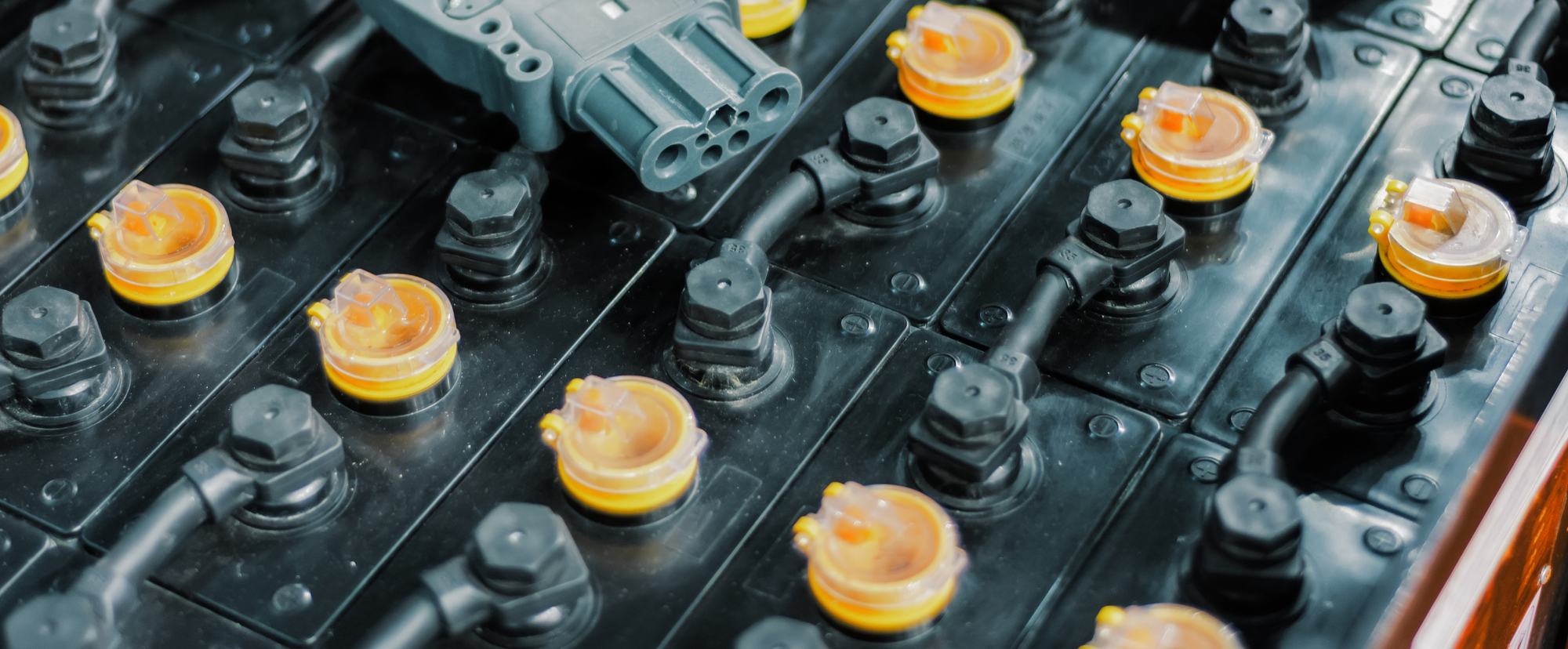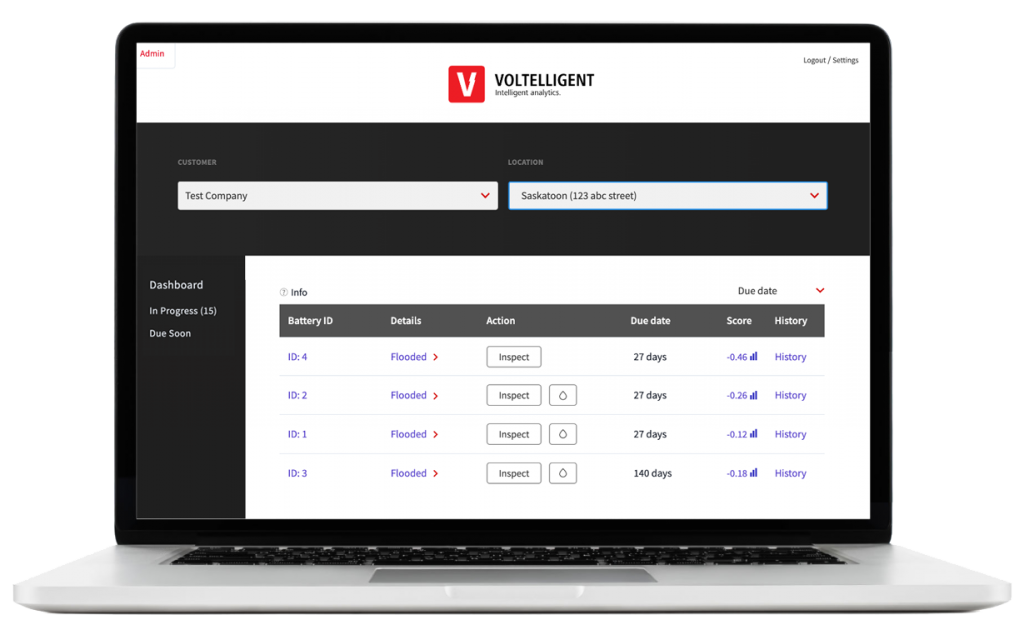
FAQs

Frequently Asked Questions
There are many reasons to consider battery planned maintenance.
-
- Battery manufacturers require inspection records to validate their warranty.
- A quick internet search will show that regular planned maintenance can increase battery service life by as much as 50%.
- Flooded batteries require periodic cleaning to neutralize acid misting that occurs on the cell tops resulting from charging. Neutralizing and cleaning this acid minimizes exposure of your personnel to the acid.
- Acid misting creates a pathway for battery self-discharge. If left long enough it will result in tray corrosion build up and degradation of the steel tray.
- Acid misting and corrosion build up create an electrical pathway resulting in an electrical short to the truck frame jeopardizing truck electrical components.
- Acid misting and corrosion build up can degrade the copper cables connected to the positive and negative posts resulting in reduced capacity to carry current and eventual failure of the cables.
- Acid misting, and corrosion build-up in particular, can result in degradation of the lead connectors that join individual cells together resulting in failure of the connection and the battery being unusable until repaired.
- Corrosion build up can result in an electrical pathway with enough capacity to melt a hole in a cell top. Click here to see video.
- Corrosion build-up between cells can crush the cells resulting in damage to the plates in the cells and in some cases breach of the cell jar seal resulting in electrolyte loss and increased corrosion.
- You could have 1 or more problem cells while the battery is still under warranty but miss the opportunity to have the problem addressed because no one is looking.
- Battery planned maintenance can alert you to the need to repair or replace your battery before it fails. Unexpected failure or replacement can result in costly downtime with the truck sitting idle, possibly incurring the cost of a rental, while repair is effected or a replacement battery is sourced.
- Periodic inspections can identify damaging practices such as over-discharging, over-charging, under-charging and over/under watering. When poor practices are identified and remedial action is taken it will result in increased battery service life.
- Battery planned maintenance with record keeping demonstrates to regulators that you are being responsible in the operation and maintenance of a product that contains regulated hazardous substances (lead and sulfuric acid).
A quality battery inspection should include the following:
- Visual physical inspection with repairs to cut cables, damaged connector housings, worn or pitted connector contacts.
- Cleaning and neutralizing of cell top acid accumulation and tray corrosion build up.
- Recording individual cell voltages, electrolyte levels and specific gravities.
- Analysis of findings with recommended changes to usage and charging practices if warranted.
A battery monitoring device records data related to the overall performance of a battery. It does not provide information about the individual cells or batteries in a string. A battery inspection yields information related to each cell or battery in a string of cells or batteries. Also flooded batteries require periodic cleaning, something a monitoring device is not capable of doing.
- There is the possibility that you will have the expense of a costly repair that might have been covered under warranty.
- You will have no fore-warning of possible battery failure resulting in downtime.
- You can expect reduced life expectancy from your motive power batteries.
- The 6 volt batteries in a 24 volt scissor lift or smaller floor machine will likely cost in the $1200 to $1600 range (2022 prices) and are more readily available, so reduced inspection frequency could be considered.
- The batteries in a larger 36 volt walk behind floor machine are in the $3000 + range (2022 prices), enough to justify being informed of their condition.
It has always been recommended that when performing battery inspections that the battery be fully charged so that the data gathered is as consistent as possible. This has always been a problem as batteries may be charged first thing in the morning but you can’t put your operation on hold all day while your batteries are being inspected. With Voltelligent’s unique method of analyzing and plotting cell voltages a battery does not need to be fully charged when it is inspected. As long as it is not on charge or is in a reasonably rested after charge state the battery can be inspected at any state of charge without affecting the outcome of the cell voltage analysis. If on charge or not reasonably rested the battery can still be inspected but the cell voltages for that inspection will not be included in the cell condition report.
You should only add water after the battery has been charged. When charging a battery gas is generated in the plates (oxygen on the positives and hydrogen on the negatives). If watered prior to charging this gas will displace the water in the battery causing it to over flow while on charge. After charging the plates retain some of the gas so if the battery is filled after charging the level will be low enough so as to not overflow the next time it is charged.
As often as it needs it. This will vary dependent on usage. We recommend recording the date when your battery was fully charged and water was added. Then check the electrolyte level every week or two after the battery is charged to monitor the level, but don’t add water. When, after the battery has been charged, and the electrolyte level is just above the top of the plates or the perforated separator add water to the battery and record the date. If you do this for a few watering cycles you will be able to determine a frequency as to how often you need to check the level and add water. You should also consider changes in usage (increase in business = increased water usage) and seasonal changes (hotter in summer = increased water usage).
When you remove a cell vent cap and look inside a cell you will notice that the hole has sides like the side of a well. After the battery has been charged you can add water to just below the bottom of the vent well sides (about 1/4” – 3/8” below).
That depends on usage. If you are a high usage application you will probably charge your battery daily and water weekly. If a medium to low usage application you may need to charge your battery 1 – 2 times per week. If you are a medium to low use application we recommend a weekly equalize charge.
- When a battery is charged the charger should automatically shut off after a specific voltage is reached for a certain length of time. If the equalize function has been activated, instead of shutting off, the charger will continue to charge for a length of time (dependent on individual charger parameters). This extra charge time results in:
- Allowing slightly weaker cells to reach a more fully charged state thus making all cells more “equally” charged.
- It causes some of the water to split into hydrogen and oxygen gas. The action of the gas bubbles rising results in drawing electrolyte down into the lower part of the cells. This is important as the sulfuric acid in a cell is much heavier than the water and will sink to the bottom leaving more concentrated acid near the bottom and lighter water near the top. The bubbling action mixes the acid and water resulting in a more “equal” concentration of the sulfuric acid.
- When you hear your battery bubbling or “boiling” while on charge or after charge, as long as it is not hot and actually boiling, it is a good thing.